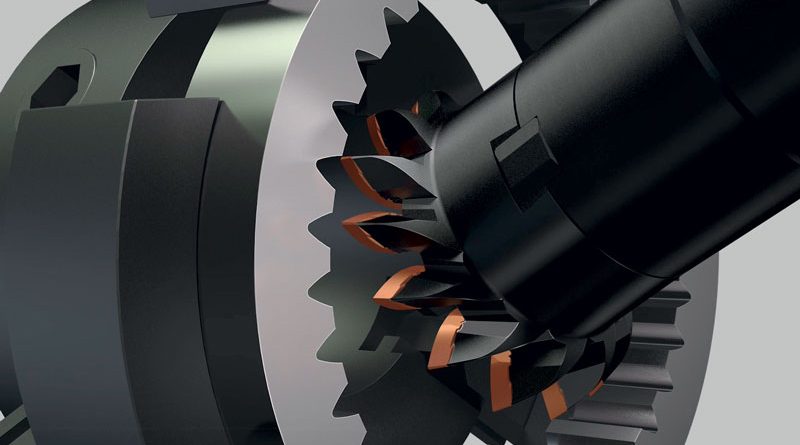Gear Production in a Single Set-up
With the new power skiving solution, comprising CoroMill® 178 and CoroMill 180 cutters, Sandvik Coromant enables gear and spline component production in a single-set up. Skiving processes are,
in fact, definetely faster than shaping.
by Alma Castiglioni
A new power skiving solution comprising CoroMill® 178 and CoroMill 180 cutters from Sandvik Coromant is being released to help automotive manufacturers complete gear and spline components in one set up on a multi-task machine or machining centre. Skiving processes are many times faster than shaping and more flexible than broaching, and are fast becoming an efficient and flexible alternative for gear and spline production.
High precision tools enabling a better finishing profile
The power skiving solution from Sandvik Coromant comprises solid bore, solid shank and indexable cutters. CoroMill 178S (solid carbide) is for use in applications where high volume, high rpm machining with long tool life is required, while CoroMill 178H (powder metallurgy HSS) is for general use on shoulders or small diameters.
These tools offer the highest tool accuracy regarding run-out and pitch compared with indexable tools, providing a better finishing profile of the gear and spline.
Reconditioning can typically be performed up to 10 times depending on the quality of the tool. CoroMill 180 indexable cutters are for high-volumes, roughing on large range of gears (module 2-9). Among many notable features is a positive rake angle for light cutting action and the potential for dry machining, which saves on coolant costs and helps to protect the environment. According to Harish Maniyoor, Global Product Manager, Industry Segment Automotive at Sandvik Coromant, the new tools, coupled with the ability for one set-up machining, can improve quality and save time and cost. In fact, cycle time reductions of circa 50% can be anticipated compared with gear shaping, helping to reduce the cost per component considerably. Besides, skiving is more flexible than hobbing for producing new, compact automotive transmissions.
Tailored solutions to meet customers’ needs
All tools are made as engineered solutions to fit precise customer needs. With the correct design, process at production levels will prove up to 15 times faster than shaping, and more flexible than broaching with better quality. The development also brings greater process flexibility to end customers, moving production to in-house machining centres and away from dedicated machine tools at suppliers. Moreover, process reliability will increase, with fewer unplanned stops. Among those set to benefit most are automotive manufacturers, as the tools support new developments in hybrid cars, as well as electromobility for cars, trucks, tractors and excavators. Typical applications include internal and external gears and splines – and cylindrical spur and helical gears – for automotive transmissions, as well as a variety of other gears, coupling components, splines, shafts, synchronization rings and CV joint parts.

